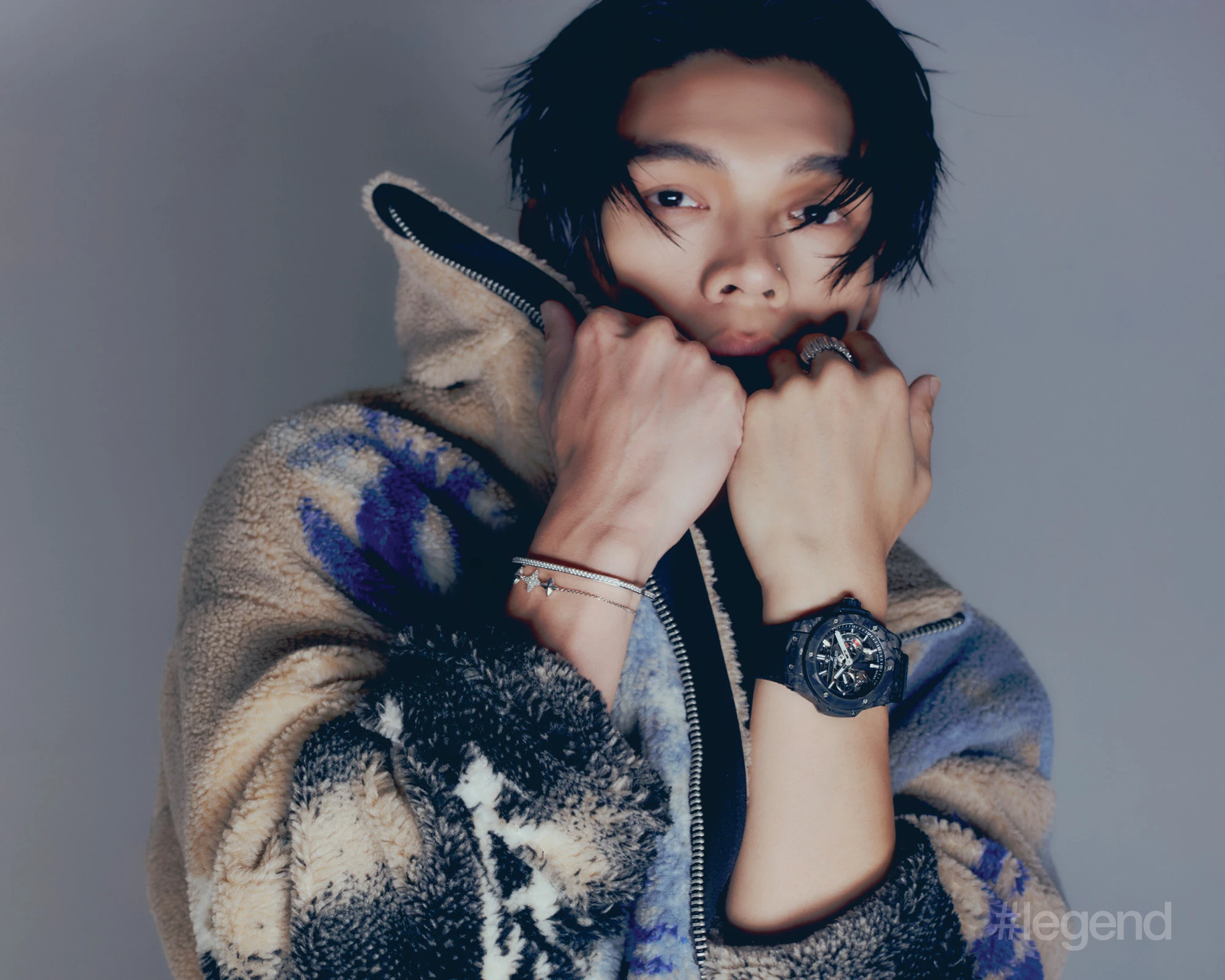Solitary pursuits: Virginia Overton's first solo exhibition in Asia
Nov 03, 2020
White Cube Hong Kong is showing Alone in the Wilderness, Virginia Overton’s first solo exhibition in Asia. Liana Chaplain speaks with Overton to discover how the artist created her show from the US and how abandoned aluminium can be transformed into works of art
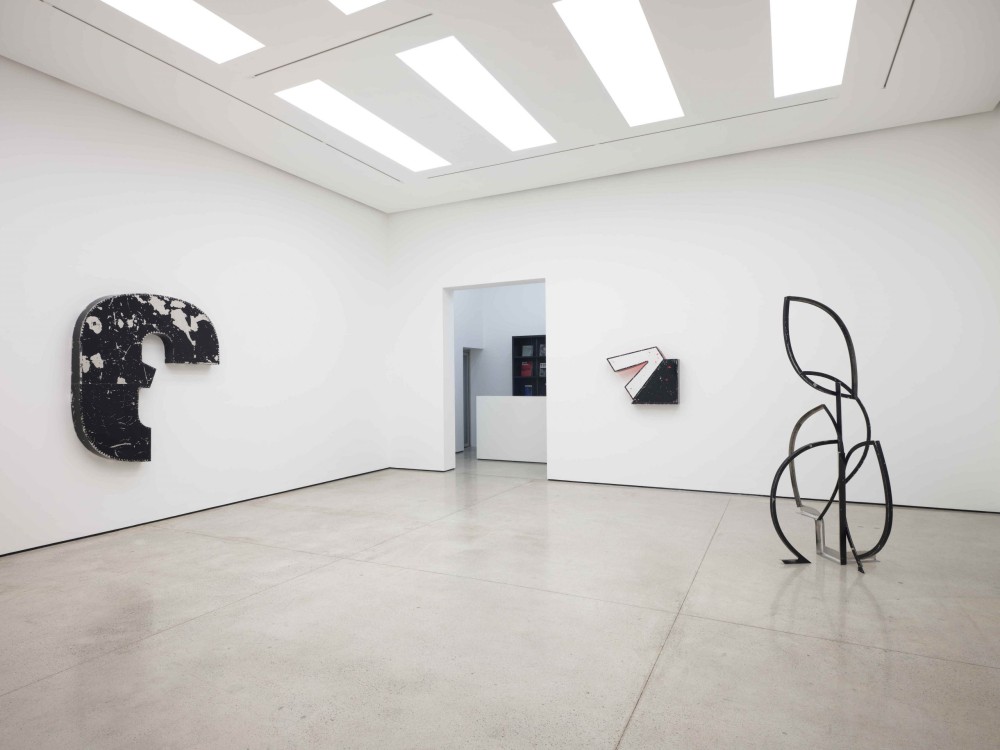
Virginia Overton isn’t your textbook minimalist. Known for her spontaneous, hands-on practice, the Tennessee-born artist transforms found industrial materials into distinctively intimate and delicate pieces of art. For her first solo exhibition in Asia, Overton has created a new sculptural body of work that uses salvaged aluminium lettering from the tops of high-rise buildings as a medium.
While these types of large advertising signs are a common sight in Hong Kong, only by encountering Overton’s pieces in person can their true scale be understood, as she manipulates and recontextualises materials to be experienced anew. In her hands, the meaning of these objects can no longer be found in the words they spell out, but in the spotted texture of worn-down lacquer or the remnant of a typographic curve. Alone in the Wilderness makes us relate to the materials in front of us differently, and with a newfound familiarity and closeness.
Over the phone, Overton dives deep into the stories behind the materials so essential to her work. Unlike her previous shows for the Socrates Sculpture Park in New York, Art Basel’s Parcours or Kunsthalle Bern, the pandemic prevented her from creating on-site as she’s accustomed to doing. But as an inherently adaptive artist, Overton still has a way of collapsing time and space. Alone in the Wilderness draws connections between a green field in rural Tennessee and a white-walled gallery, bringing together a material’s past lives with its present possibilities.
Your work responds to and transforms architectural space. What was it like to set up an exhibition in Hong Kong remotely?
Ugh, I wish I was there! This is the first time I’ve ever made a show in this way – and that was the biggest hurdle to figure out. I knew I was going to do the show at White Cube Hong Kong for quite a while, so even last year when I originally found this material, I had started thinking about it as a potential jumping-off point. Kind of like how everybody’s making sourdough right now – even though I make work on-site at galleries or institutions, I also often bring some with me as a “starter”.
When we realised that I couldn’t be there, it meant changing the way I work in a lot of ways. Obviously, I wouldn’t physically be there, drawing on that specific location and literally gathering materials from nearby. But I would also make everything ahead of time, which isn’t the way that I work. It’s both the thing that invigorates the work for me, but also roots it in a particular place. I did a lot of things that I usually do, like study the floorplans and look at images and videos of the space.
I would email funny questions, like, “Is that doorway really as wide as it looks?” just to get familiar. On the other hand, I had a lot of time with the pieces I was making on the front-end that I don’t usually have, so I got really familiar with them and their volumes and textures. That gave me information I wouldn’t normally have if I was on-site, so it was a trade-off.
Alone in the Wilderness is your first solo exhibition in Asia. What compelled you to bring this show to White Cube Hong Kong?
I’ve worked with White Cube for a number of years and I’ve done shows in their two other galleries in London. I went to Hong Kong once in 2008. I used to be on a dragon boat team and after we travelled to Malaysia for the world championships, I spent two weeks in Hong Kong with a couple of my teammates – and I loved it. I knew I wanted to go back at some point, so it was interesting to have the experience of having been there as a tourist, and then thinking about the opportunity to go back there and do my work making sculptures for that urban environment. I was taken by the architectural lighting and signage all over the city; it was such a different experience than anywhere in the States.
“I’m drawn to the discarded because there’s still potential in it – and I want to see if I can work with the material to express that potential”
Virginia Overton
What was your journey to becoming an artist?
I didn’t originally go to college for art. I didn’t really go for anything in particular. I took a very circuitous path and I tried so many things – teaching, working in offices, redoing houses – but I kept coming back to art. Eventually I did get a degree in art, and everything clicked into place. I learned and moved along in a really intuitive way, but that’s what brought me to where I am now – both physically and as an artist. I have some work titled Late Bloomer, which was this idea that I took a long time, but I got there eventually. Now I’ve reinterpreted this to “constant bloomer”; I’m constantly learning and being challenged, and putting things out there that do that in the world, too. That’s why when I come across new material, I dive in wholeheartedly. Every show, every work, every exhibition is growing on the last thing.
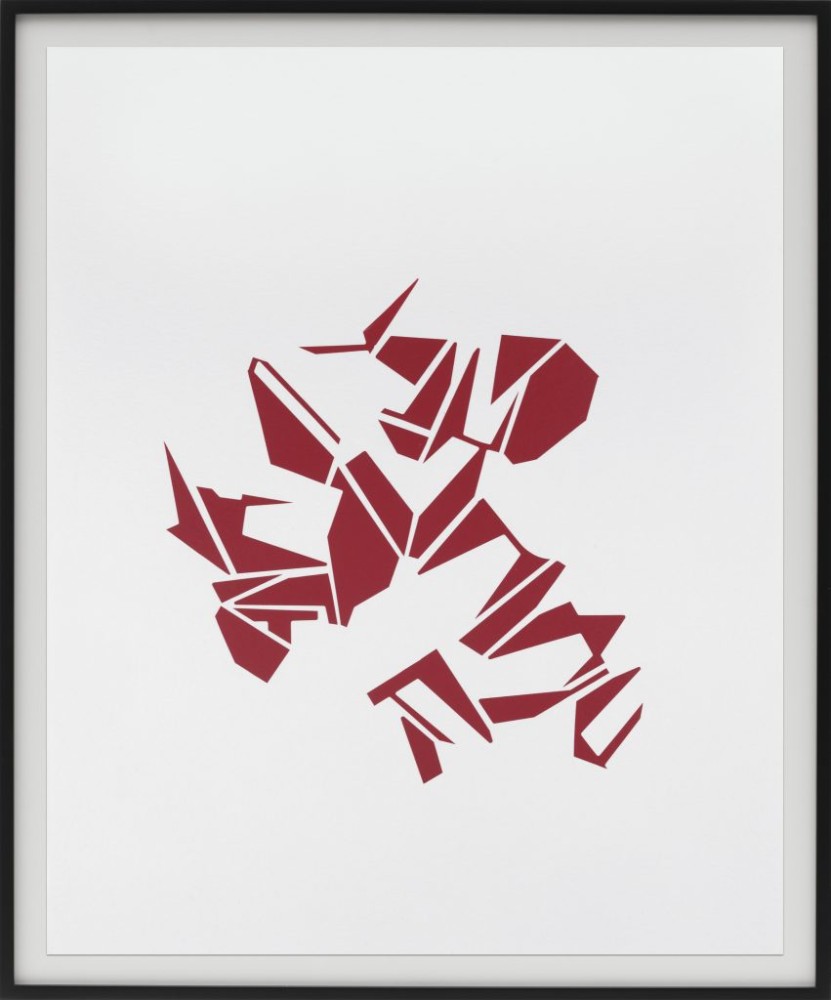
You’ve debuted some new works on paper for this exhibition. What compelled you to begin working in this medium?
I have a friend who’s a book designer and he would give me his book dummies that I would create sketchbooks out of. Another friend gave me an old red-glittery letter set, and the collages I made were what started this investigation of letters that’s at the exhibition. When the pandemic hit, I wasn’t in my studio where all my tools were, but I wanted to keep working – so I started doing the same thing with large pieces of paper. The relationship between the works didn’t become clear to me until later, but I wondered if unconsciously working with these disjointed pieces of letters drew me to that pile of disassembled signage.
You often work with found materials in your surroundings. What about these disassembled aluminium advertising signs piqued your interest to salvage them and turn them into art?
It was really visual. I was driving through the countryside in the South [of the US] near where I grew up and I saw this big mass of colour sitting in a green field. As I got closer, I could tell that it was some kind of signage that was intended to go to a scrapyard, because it was cut up into bits and pieces. I investigated further, found the guy who owned it and recycled it – just in a different way. My sister happened to know the owner, and it’s a common Southern thing to see somebody’s truck in their driveway and stop to say hello. We ended up talking for a couple of hours and found out he was one of the few people in the US whose companies do high-rise sign installation.
When I go out on a limb like that, I don’t know what’s going to happen. I’d never worked with this type of material before. I took the pieces to an open field on my family’s farm, and started moving things around and getting familiar with the material. Because it was aluminium, although some of the pieces were large, I could pick them up and move them quite easily. The more I did this, the more interested I was.
How attached do you feel to your work?
When I’m doing an installation, working with the people who are there is an important part of how the work comes to be. I wouldn’t say I get attached to the material, but I get familiar with it and live with it for a period of time. There’s an intimacy that’s born of that. I make work as an investigation for myself, but ultimately I want to put it out into the world for people to see it and have their own experiences. That naturally changes what a piece is. When you change the location it sits in and other people lay their eyes on it, it begins to be a different thing. If I see a work some years later, I hope that it’s doing well, but I’m also okay with it being whatever it is at that point. We cross paths at one point and then it’s moving on to its next life, whether it’s in that form or another one.
The materials you work with have a life both before and after you’ve touched them. What might the afterlife of Alone in the Wilderness look like?
This title of Alone in the Wilderness is unique to this period of time, because we’re all alone in it together. I feel that way for works – like I’m sending them out with my best hopes into the wilderness. The wilderness is this expanse of the world that we live in, so within that is a ton of potential.
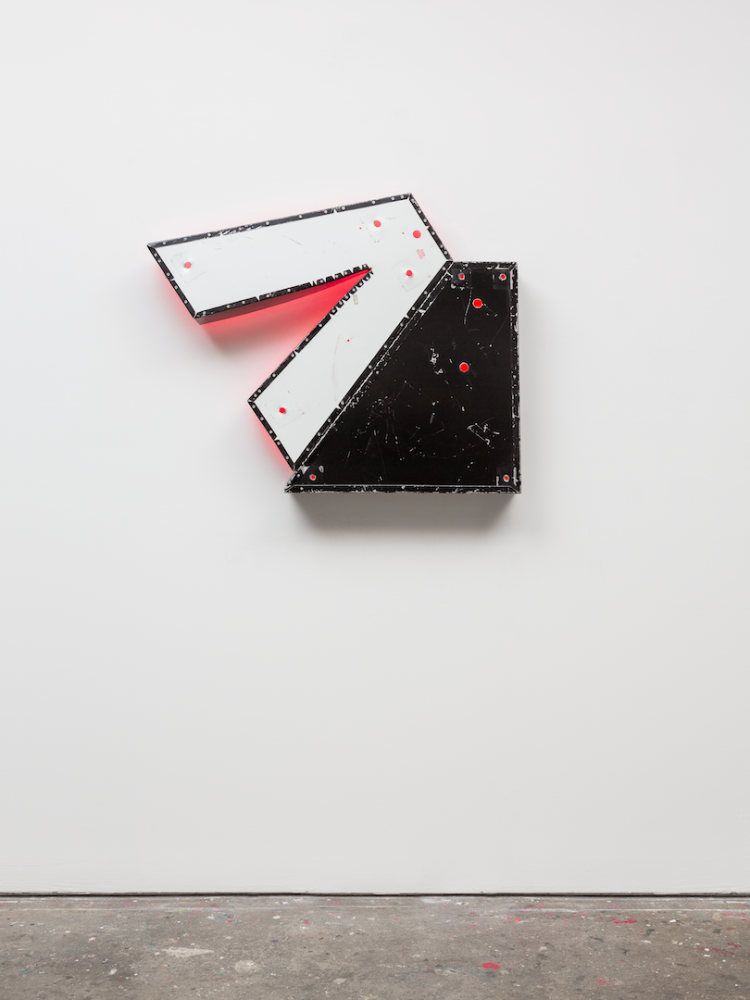
You’ve incorporated signs in some of your past exhibitions, but language and signifiers take centre stage in this particular show. What is the importance of language in this body of work?
Signs are elemental to our existence – everything from the simplest signs, like numbers on buildings, or longer signs that tell us which way to go or what not to do. I started using them as a way to signify that I was in a place. Literal signs that said the name of the institution, or flags, or weathervanes that I would put on the outside of buildings when I had a show inside them became signifiers that said: “I am here.” This show gave me a chance to play with how language is formed. The letters naturally held onto the vestiges of having been used as language, even when they were cut up and rearranged. We don’t necessarily know what the object that we see on the wall is. We look at these reliefs and think: language.
” I learned and moved along in a really intuitive way, but that’s what brought me to where I am now – both physically and as an artist”
Virginia Overton
What were you trying to say by bringing these signs indoors into the gallery space?
For me, it’s an expression of intimacy. When you bring something off of the top of the building, which is intended to be seen at a distance, down into your realm, you can see it in a different way. You can see the surface texture, imperfections and inconsistencies in the paint. Putting it in the view of people allows it to exist in a different way; it’s no longer otherworldly, floating above our heads, but in the room together with us.
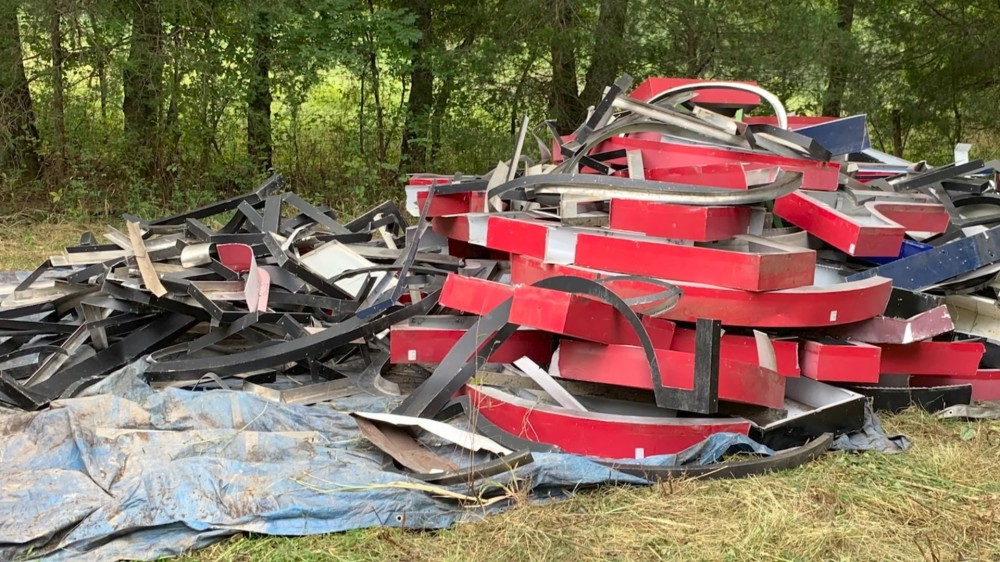
Why do you work with discarded materials in this way? What’s your relationship with them?
I like to divert the trajectory of material that’s heading to the landfill. If you have a pot that gets a hole in the bottom, then it can’t be used for its intended purpose anymore, but you could put a plant in it or cut it apart and turn it into something else. I’m drawn to the discarded because there’s still potential in it – and I want to see if I can work with the material to express that potential.
Your work has a sense of familiarity and spontaneity. Do you feel like your work challenges the removed, masculine regularity that’s often associated with the legacy of minimalism?
It seems like minimalism and geometry have been relegated to one understanding, and that’s through a masculine lens, but I think that’s largely because of the historic neglecting of artists of other genders working in these ways – they weren’t brought into the conversation. People look at geometry and think hard edges and mathematical expressions, but I actually interpret those things more as an investigation of form, which is a really delicate act. These forms come from the natural world, like the nautilus shell or the form of a crystal, which we automatically think of as feminine. But they’re just formed from the same shapes that minimalists use to make their works. I think it’s maybe as simple as shifting the types of words we use.
Alone in the Wilderness is on view at White Cube Hong Kong until November 14. #
For more from the #legend October issue, check out: TikTok queen and fashion influencer Jessica Wang on the world of social media























